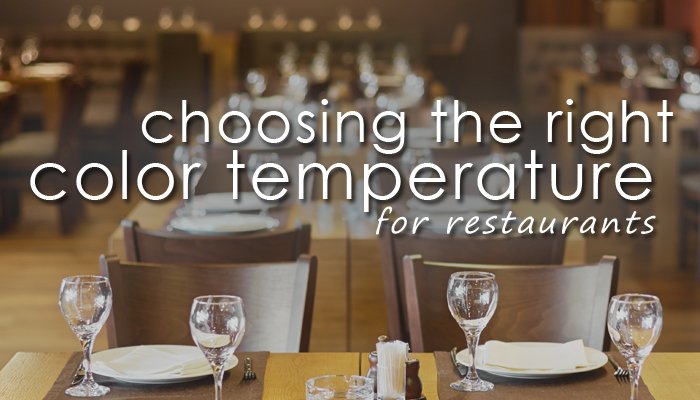
Choosing The Right Color Temperature – For Restaurants
Imagine the atmosphere of your favorite restaurant. Is the space welcoming? Or perhaps, cozy? Does it seem spacious? Bright? Of course, the décor sets the mood for a restaurant. But have you ever taken note of the lighting? Lighting in a restaurant is essential in creating a tone and atmosphere for patrons. The color of the lighting plays a role, not only in the atmosphere, but also in the way food is presented to customers. To further understand the color of lighting, we must revisit the color temperature.
In a previous post, we provided a guide on color temperature. To briefly recap, color temperature ranges from warm white (2700K), neutral white (3000K), cool white (4100K), and daylight (5000K-6500K). Warm white contains a yellow hue, while cool white and daylight emit a bright light with blue hue.
So, how does the color of lighting affect restaurants?
Different color temperatures can make dining areas feel larger or smaller.
Most full-service restaurants use warm lighting. Warm lighting makes a room feel smaller than it actually is. It creates a more comfortable and welcoming atmosphere. Warm, like its name, and cozy. Fine dining institutions typically use this type of lighting.

However, in more casual restaurants, cool white lighting may be used. Cool white lighting is brighter and typically more cost effective—fluorescents and LEDs are most commonly used to produce this type of light. Cool white light is typically used in fast-food and take out institutions. This brighter light helps promote a friendly, clean and energetic atmosphere. In contrast to warm lighting, cool lighting opens up a space and increases stimulation and activity—encouraging turnover rate.

Different color temperatures accentuate different foods.
Color temperatures accentuate different foods, making them more appealing, mouth watery, and fresh. Have you ever noticed the lighting in the prime rib section of a buffet? Typically, a pink and rosy bulb is used in this area to accentuate the juices of the red meats—adding a pop of color making the meat look seemingly perfect. These pink and rosy bulbs are in the 2250K range—warmer, and redder—falling below the warm white range.

Lighting in the 3000K range is typically used to accentuate brightly colored food, such as vegetables and fruits. This lighting not only highlights the colors of the produce below, it also brings light to texture. With color and texture emphasized under a brighter light, the produce looks more fresh and crisp. Ideal for restaurants with salad bars.

Lastly, neutral and cool white lighting can be used to highlight fish and white meats. In this color temperature, fluorescent bulbs are typically used. Fluorescents are extremely versatile, as they can be dimmed to create a more relaxed mood while still benefiting from cool white attributes—as stated earlier, making a space feel more spacious, active, and friendly.
